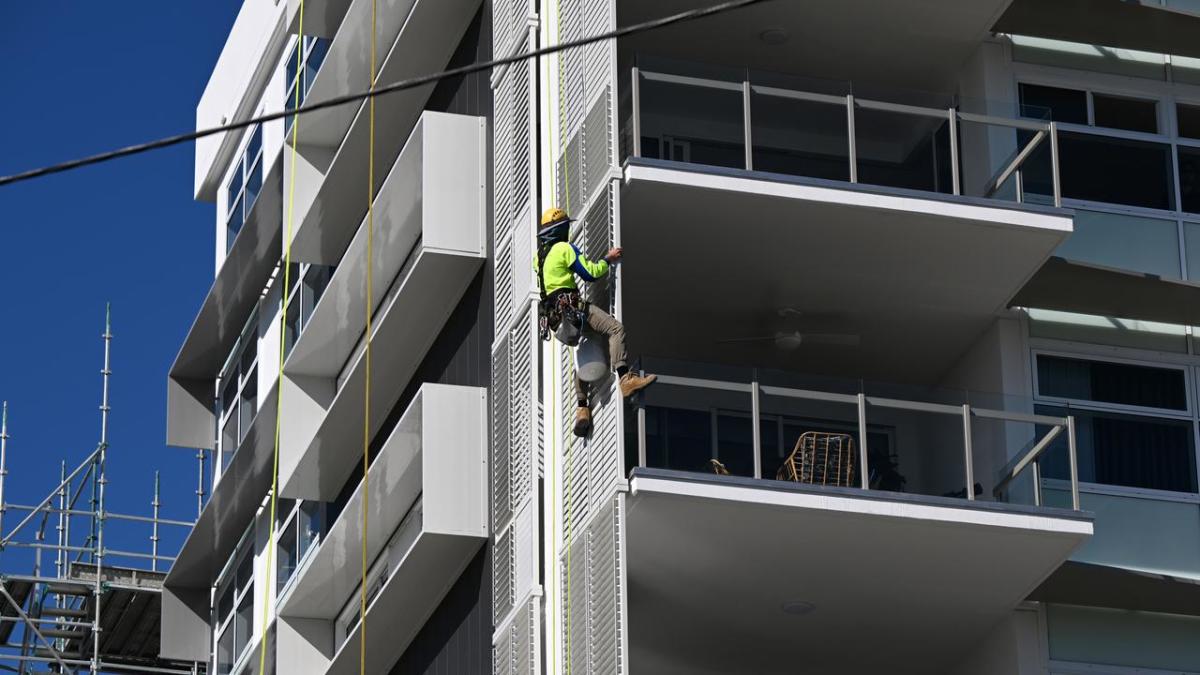Interest rates might have peaked but the mortgage pain is not over yet, and there is likely more of an impact felt in the housing market, commentators say.
The Reserve Bank is expected to keep the Official Cash Rate on hold at 5.5% on Wednesday and most forecasts are for it not to drop until the end of the year.
Higher interest rates have been blamed for a significant fall in house values. While the market drop has now largely stopped, prices are still well down on their peak — about 15% by the Real Estate Institute’s (REINZ) measure.
That is putting pressure on people who bought in recent years and now face both higher interest rates and softer values.
Corelogic data showed that 7.1% of homes that changed hands in the first quarter of this year sold for less than they had been bought for. The median hold period of those that made a loss was 2.4 years. The median loss was $50,000.
Chief property economist Kelvin Davidson said about 4% of property resales had been owned for two years or less, compared to 9% in the first quarter of 2020.
“I suspect that rather than financial strain showing though — although there will clearly be some, I think this probably just reflects the changed market — you could hold short prior to Covid and make a solid capital gain; in the past few years you don’t want to hold short as capital gains have been flatter.”
He said while homeowners had adjusted relatively well to higher mortgage rates so far, the process was not over yet.
“Not everyone has priced up to 7% yet, and now we’ve got the extra pressure on job losses coming through. I’m not sure this will trigger a wave of of financial stress — not least because banks are strongly willing to help people through — and nobody is expecting a huge blowout in the unemployment rate. But it’s still a risk to watch, and another reason to think this housing ‘upturn’ will remain slow and patchy.”
He said mortgagee sale rates were still relatively low.
Infometrics chief forecaster Gareth Kiernan said there were signs of increased stress in the housing market.
The number of houses for sale on Realestate.co.nz was up 23% since July last year, to its highest level since 2015.
“The biggest lifts have been in Wellington and Wairarapa – up 43% and 35% respectively, as the spectre of public sector job cuts has hung over the lower North Island. Other regions with increases of 30% or more over the same period are Auckland, Bay of Plenty, and Coromandel — areas where affordability metrics remain highly stretched given the current combination of house prices and mortgage rates.”
He said it could not be argued the sellers were coming back to the market because their prospects for sale had improved.
“After a 3% lift between April and July last year, REINZ’s house price index has gone sideways over the last six months. Instead, higher numbers of new listings and the increased stock of property for sale suggest that more people are struggling with larger mortgage payments, and looking to unload property before the bank sells it from under them. This inference is consistent with Reserve Bank data showing that the proportions of non-performing and overdue mortgage lending have trended upwards since mid-2022 and are now at their highest levels since 2013.
“Anecdotally, the extra bite from increased mortgage rates over the last six months has come as highly indebted households have burned through their cash reserves and are struggling to meet their increased payments, with mortgage rates of 6.5% or over. Some homeowners or investors will previously have been able to put cash aside while they were on lower fixed mortgage rates.”
He said only people who were coming off one-year fixes were able to access a rate that was lower than they had previously had, and only then if they were willing to take a longer term.
But almost 70% of new lending is being done at terms of six or 12 months.
Property investor and coach Steve Goodey said he had seen a number of people buying houses from people taking a big loss. “Some are really feeling the interest rates.”
He said some developers were probably under pressure because it was possible to buy new-build homes at prices below what it would cost to build them.
Kiwibank chief economist Jarrod Kerr said there were still about 15% of households who had not rolled off the Covid low interest rates at all.
New Corelogic data shows the number of transactions by “movers” shifting from one owner-occupied house to another has increased 27%.
First-home buyers’ market share dropped to 25% and investors with mortgages were about 20% to 21% of activity, a low level compared to history.
By Susan Edmunds of rnz.co.nz











